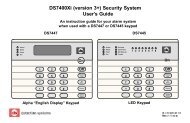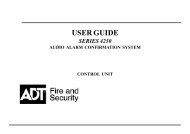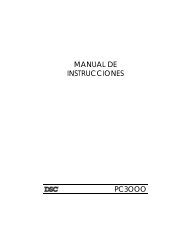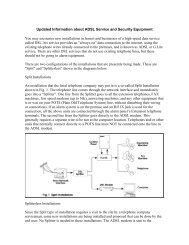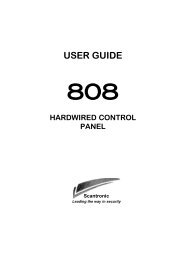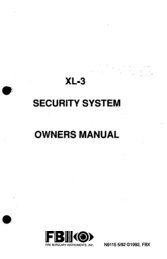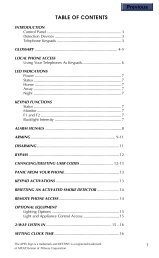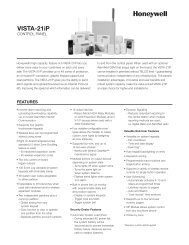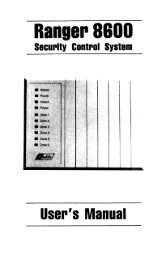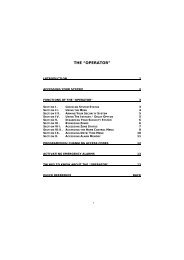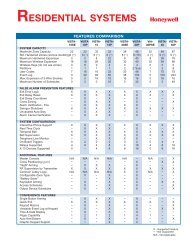SENTROL Application notes - Alarms BC
SENTROL Application notes - Alarms BC
SENTROL Application notes - Alarms BC
Create successful ePaper yourself
Turn your PDF publications into a flip-book with our unique Google optimized e-Paper software.
......................................................................................................................................................................... Introduction<br />
PROTECTING AGAINST VOLTAGE SPIKES<br />
The Sticking Reed Switch Problem<br />
When magnetic reed switches are wired in line with relay devices with coils, the<br />
reverse voltage spike generated when current is removed from the relay can fuse<br />
the switch contacts together.<br />
Figure 1 shows that when the contact is closed, current flows through the relay coil<br />
and magnetizes the iron core. When the contact is opened, current from the power<br />
supply stops and the magnetism of the relay iron drops to zero instantly. The<br />
collapsing magnetic field draws voltage into the relay coil. Since the coil is open<br />
(open reed switch) and there is no circuit loading to limit the voltage, spikes from<br />
the open relay can reach 500 volts or more, causing arcing across the reed contacts.<br />
(Most of Sentrol’s reeds arc between 150 and 200 volts, well within this reverse<br />
voltage kick.)<br />
Repeated arcing roughens and pits the reed switch blades until they eventually<br />
stick together mechanically. Installers often find that tapping on the switch will<br />
cause the contacts to release (open). The “fix” is only temporary, however.<br />
Correcting the Problem for DC Circuits<br />
Voltage kicks or transients from DC circuits are easily controlled by adding a diode<br />
across the relay coil, as in Figure 2. The diode has no affect on the circuit when<br />
the current flows in the right direction. However, when current from the power<br />
supply stops suddenly and the relay coil generates a reverse voltage, it shorts<br />
through the diode. Note that the stripe on the diode points toward the + voltage.<br />
The diode used should be a #1N4002, 1N4003, 1N4004 or equivalent.<br />
... and for AC Circuits<br />
In AC circuits, current flows through the relay coil in both directions. Using a<br />
diode would simply short out half of every cycle. However, a transient protection<br />
diode, called a TransZorb ® , can be used to clip off voltage spikes in either<br />
direction as shown in Figure 2. TransZorb must be selected to fit the voltage used<br />
in the circuit. To find the correct TransZorb voltage rating, multiply the circuit<br />
voltage times 1.414. For example, in a 24 volt circuit a TransZorb rated at 34 volts<br />
or more may be used (24 x 1.414 = 34).<br />
+<br />
Relay<br />
+<br />
Relay<br />
MAGNETIC CONTACTS<br />
D.C.<br />
Power<br />
Supply<br />
-<br />
Switch<br />
D.C.<br />
Power<br />
Supply<br />
-<br />
Diode<br />
TransZorb®<br />
Switch<br />
Magnet<br />
Magnet<br />
Figure 1<br />
Figure 2<br />
3.9



